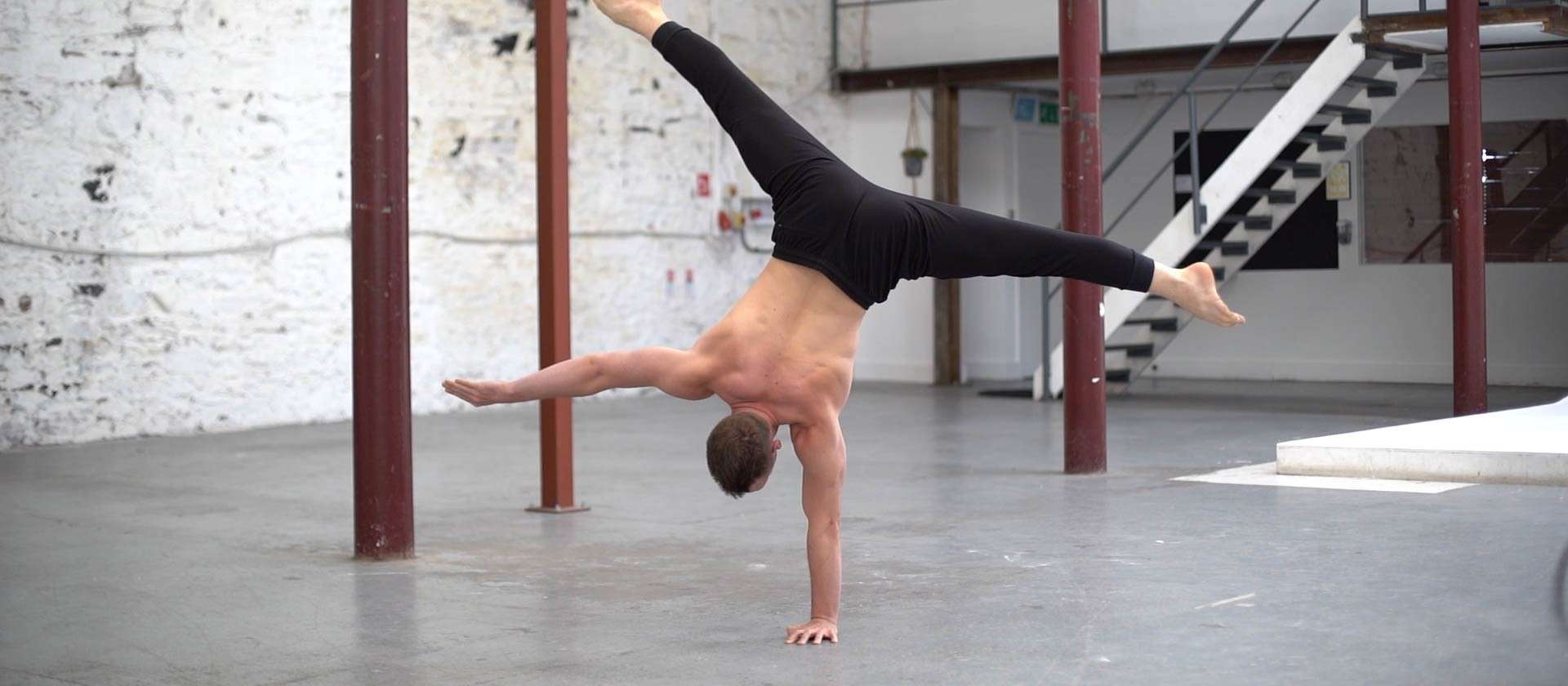This is a very commonly asked question. The one-arm handstand is a lofty goal for many and it represents a higher dimension and mastery of handbalancing. While handstands can fully be enjoyed without learning a one-arm, it is a natural progression for those who seek further depth and challenge after their two-arm is sufficiently mastered. Most people understand it requires quite some experience before it’s worth working on, but it can be confusing to know what aspects matter the most. Its difficulty is unlike anything on two arms and it requires so much more from every aspect of one’s handstand training to achieve.
The general ability level we should look for before thinking about the one-arm handstand is a sort of “full mastery” on two arms. You can always get better or improve details of course, but the alignment, technique, control and comfort must be very high on two arms to the degree there is little challenge left in the basic drills. The following points are good to develop towards before taking the one-arm handstand training seriously:
Minimal requirements:
- consistent 60+ seconds handstand with good alignment
- Easy controlled leg movements on two arms
- straddle press to handstand
Recommended requirements:
- consistent 90 seconds handstand with good alignment
- Easy and effortless leg movements on 2 arms
- pike press to handstand with minimal forwards lean
- straddle press to handstand with minimal forwards lean for reps
- well developed straddle and pancake flexibility
The criteria above are not absolute of course, but they do matter. What we are looking for technically is that your shoulder position is rock solid in the basics above. The shoulder stays in an elevated position and is unaffected by leg movements or by longer holds. When doing presses, the shoulders stay as stacked as possible and the back rounds in the lower ranges.
All of the above signifies a shoulder placement that is ready to be challenged in much more complex world of the one-arm. If your shoulder are not able to stay stacked while you do regular two arm work they will very likely give in very quickly as soon as you begin transferring the weight to two arm. Not only does the arm need to carry significantly more weight but is also challenged heavily by much more complex balance issues in the lateral and rotational directions.
On top of this we also have the flexibility aspect. Having a good middle split and pancake will be the direct positions that will help you the most to learn the one-arm. The straddle one-arm is by far the easiest position and the one that makes the most sense to begin learning. The wider the straddle, the easier of a time you will have with it. The width of your straddle and depth of pancake will impact how low your centre of mass will be as well as allowing you to control rotation better when learning.
Remember that prerequisites we have set here are meant to be generalized to set realistic expectations and provide a guideline for the average practitioner. Then of course we have the outliers. Those who are able to begin training it without “fulfilling” classic criteria as those above. There are rather few training forms that give a meaningful carryover to handbalancing, but people with a lot of acrobatic experience can sometimes have beneficial spatial awareness. People from disciplines such as breaking, capoeira, other circus disciplines, etc might be able to access the one-arm balancing sensation faster than others.
However, we are looking for a consequent and replicable approach that we know can be applied again and again and to do so we need prerequisites, methodology and a technique. Learning the one-arm handstand takes a lot of time even with the best of preparation. From our experience, the average person spends between 1.5 to 3 years developing their first straddle one-arm even with a pretty good level of preparation.
The process can be long and often frustrating. There will be ups and downs in it and injuries might make it even longer. In this way its important to know what you are in for and to enjoy the process and the practice itself even when the result you are looking for is far in the future. A better question to ask for many would be if you are currently enjoying your handbalancing practice enough to keep doing it for years.

